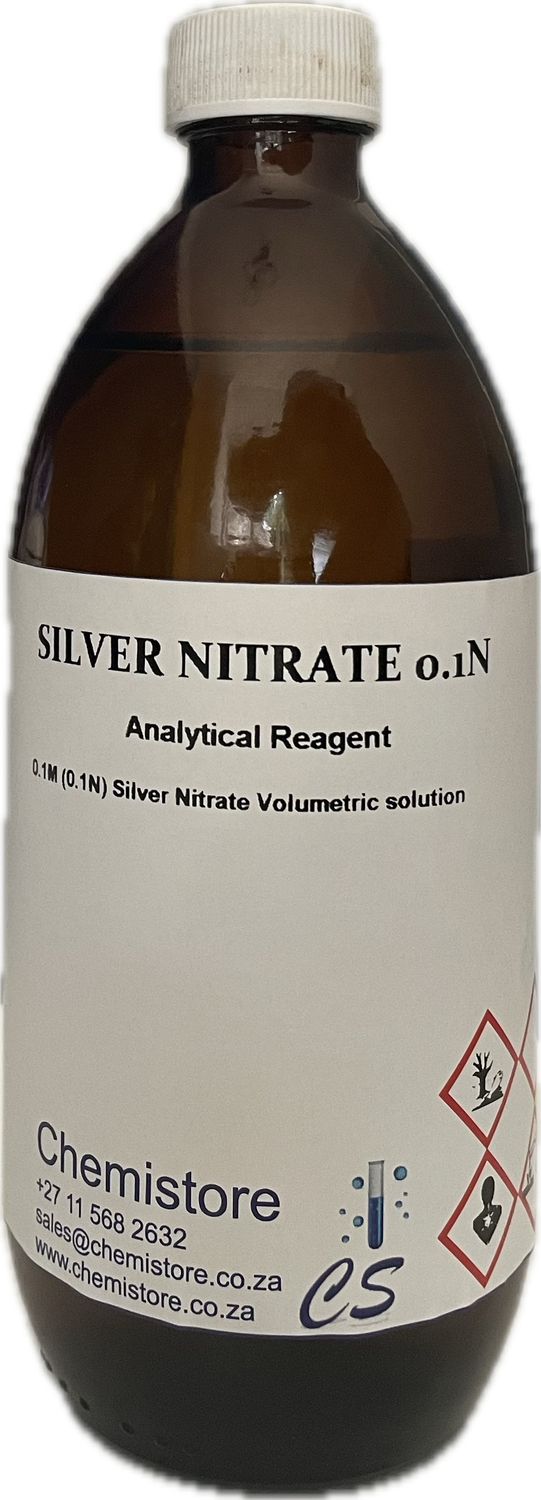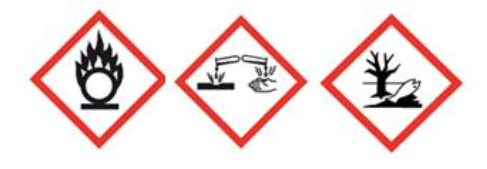Silver nitrate 0.1N, 500ml
Molecular Formula: AgNO3
• Argentous nitrate
Synonyms: • Lunar caustic
• Silver (I) nitrate
CAS Number: 7761-88-8
Molecular Weight: 169.872 g/mol
Description:
Silver nitrate is an inorganic compound with chemical. It is a versatile precursor to many other silver compounds, such as those used in photography. It is non-hygroscopic, in contrast to silver fluoroborate and silver perchlorate. It is relatively stable to light. Finally, it dissolves in numerous solvents, including water. The nitrate can be easily replaced by other ligands, rendering AgNO3 versatile. Treatment with solutions of halide ions gives a precipitate of AgX (X = Cl, Br, I). When making photographic film, silver nitrate is treated with halide salts of sodium or potassium to form insoluble silver halide in situ in photographic gelatin, which is then applied to strips of tri-acetate or polyester. Similarly, silver nitrate is used to prepare some silver-based explosives, such as the fulminate, azide, or acetylide, through a precipitation reaction.
Safety:
Silver Nitrate can affect you when inhaled and by passing through the skin.
Silver Nitrate is CORROSIVE and contact can severely irritate and burn the skin and eyes with possible eye damage.
Inhaling Silver Nitrate can irritate the nose, throat and lungs.
Exposure to Silver Nitrate can cause headache, dizziness, nausea and vomiting.
High levels of this substance may reduce the blood’s ability to transport Oxygen, causing headache, fatigue, dizziness, and a blue color to the skin and lips (methemoglobinemia).
Repeated exposures to Silver Nitrate can cause blue-gray discoloration (argyria) of the eyes, skin, inner nose, mouth, throat and internal body organs. This may take years to develop but is permanent.
Silver Nitrate may affect the kidneys.
Silver Nitrate is not combustible, but it is a STRONG OXIDIZER that enhances the combustion of other substances
FIRST AID
Eye Contact: Immediately flush with large amounts of water for at least 30 minutes, lifting upper and lower lids. Remove contact lenses, if worn, while flushing. Seek medical attention immediately.
Skin Contact: Quickly remove contaminated clothing. Immediately wash contaminated skin with large amounts of water. Seek medical attention immediately.
Inhalation : Remove the person from exposure. Begin rescue breathing (using universal precautions) if breathing has stopped and CPR if heart action has stopped. Transfer promptly to a medical facility.


